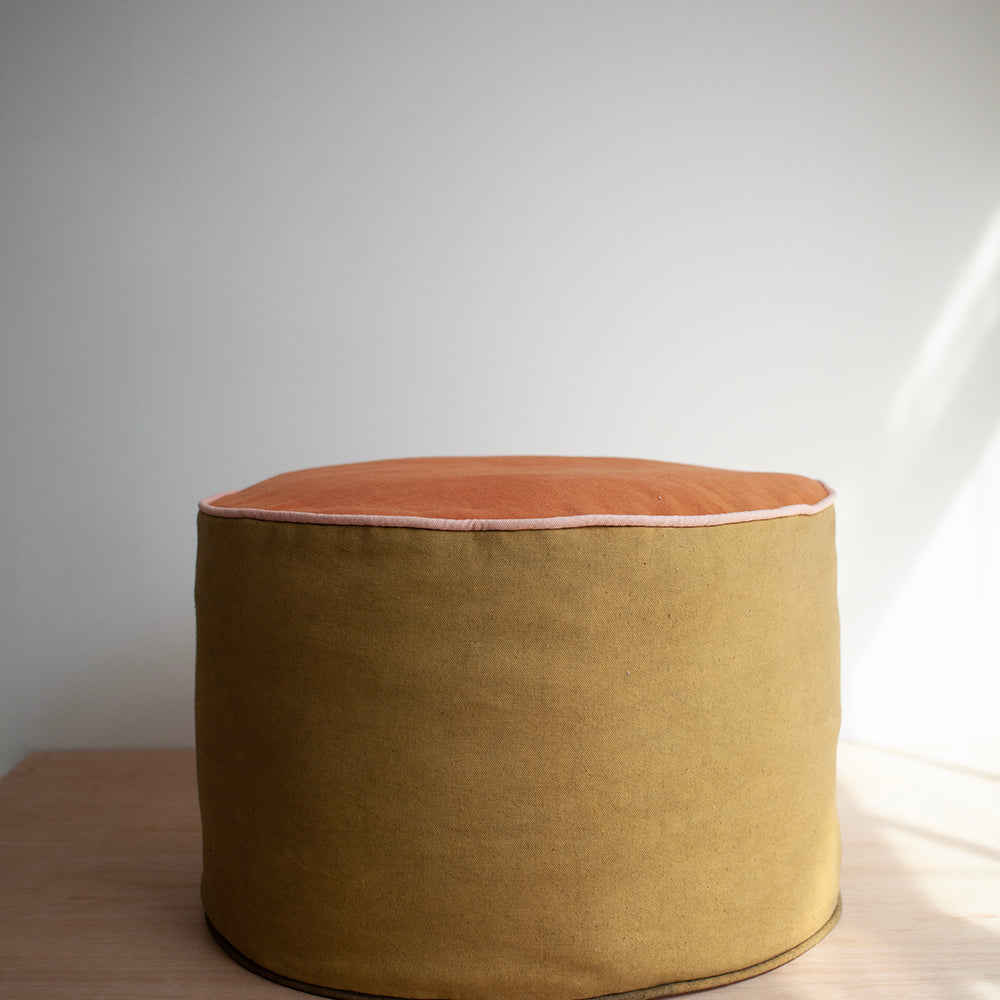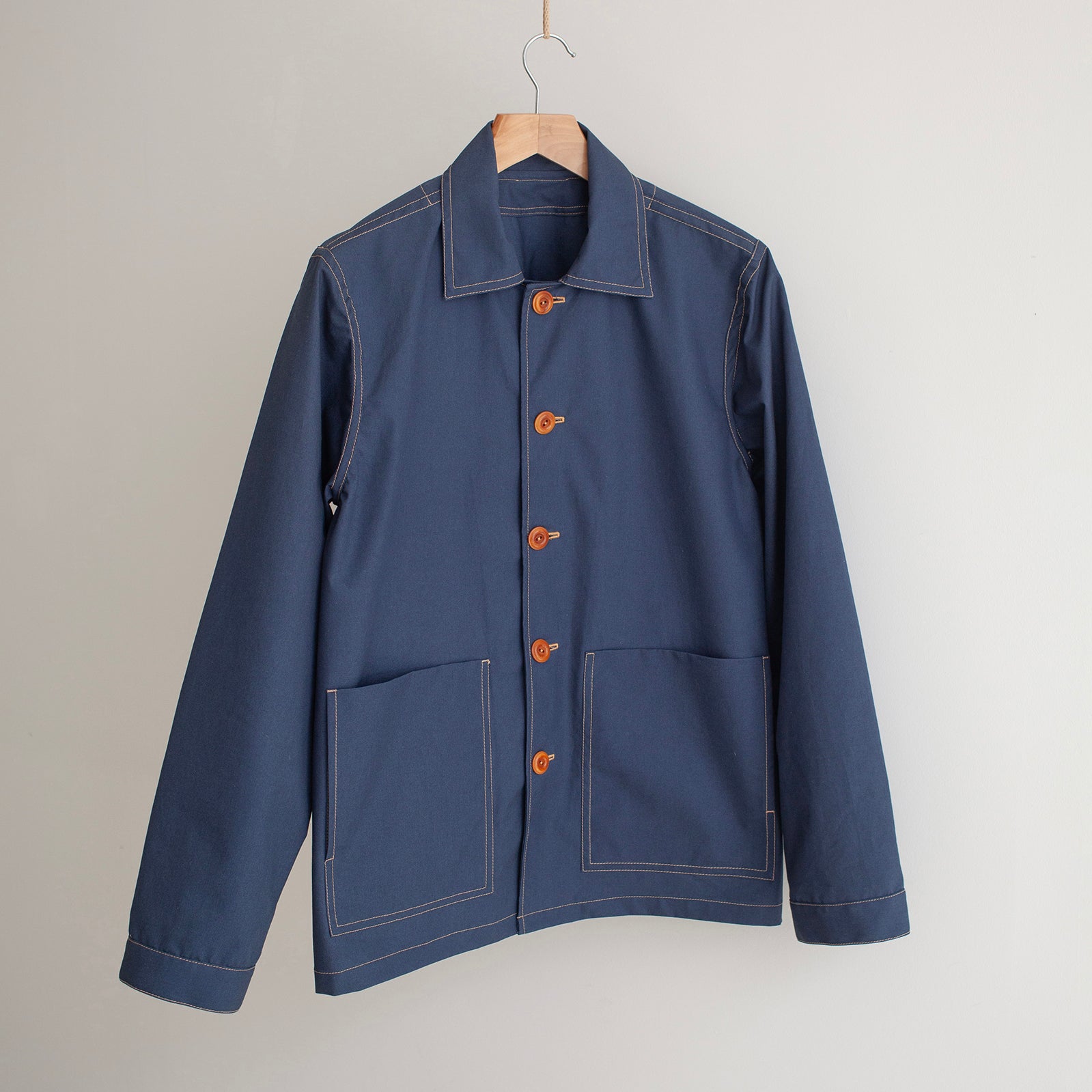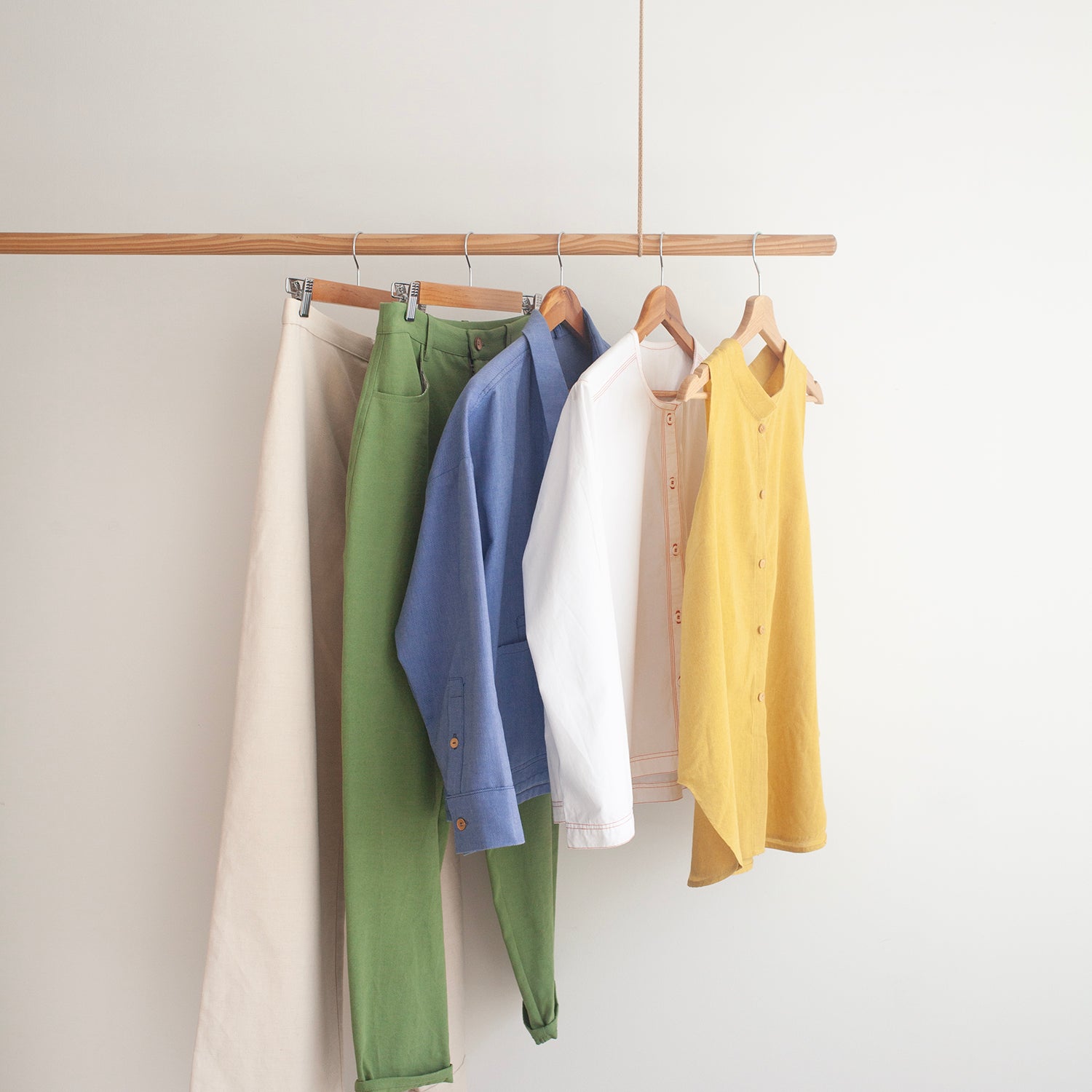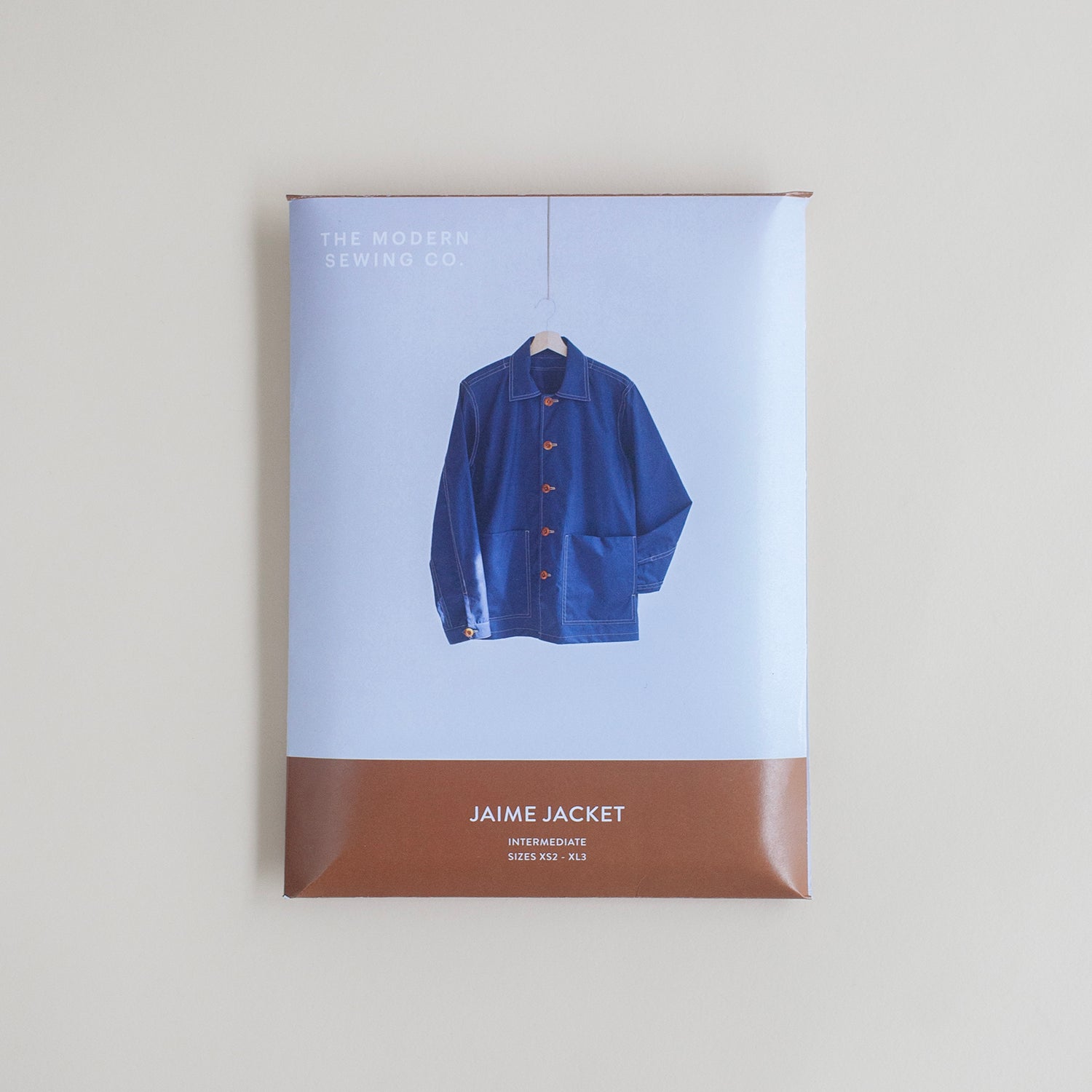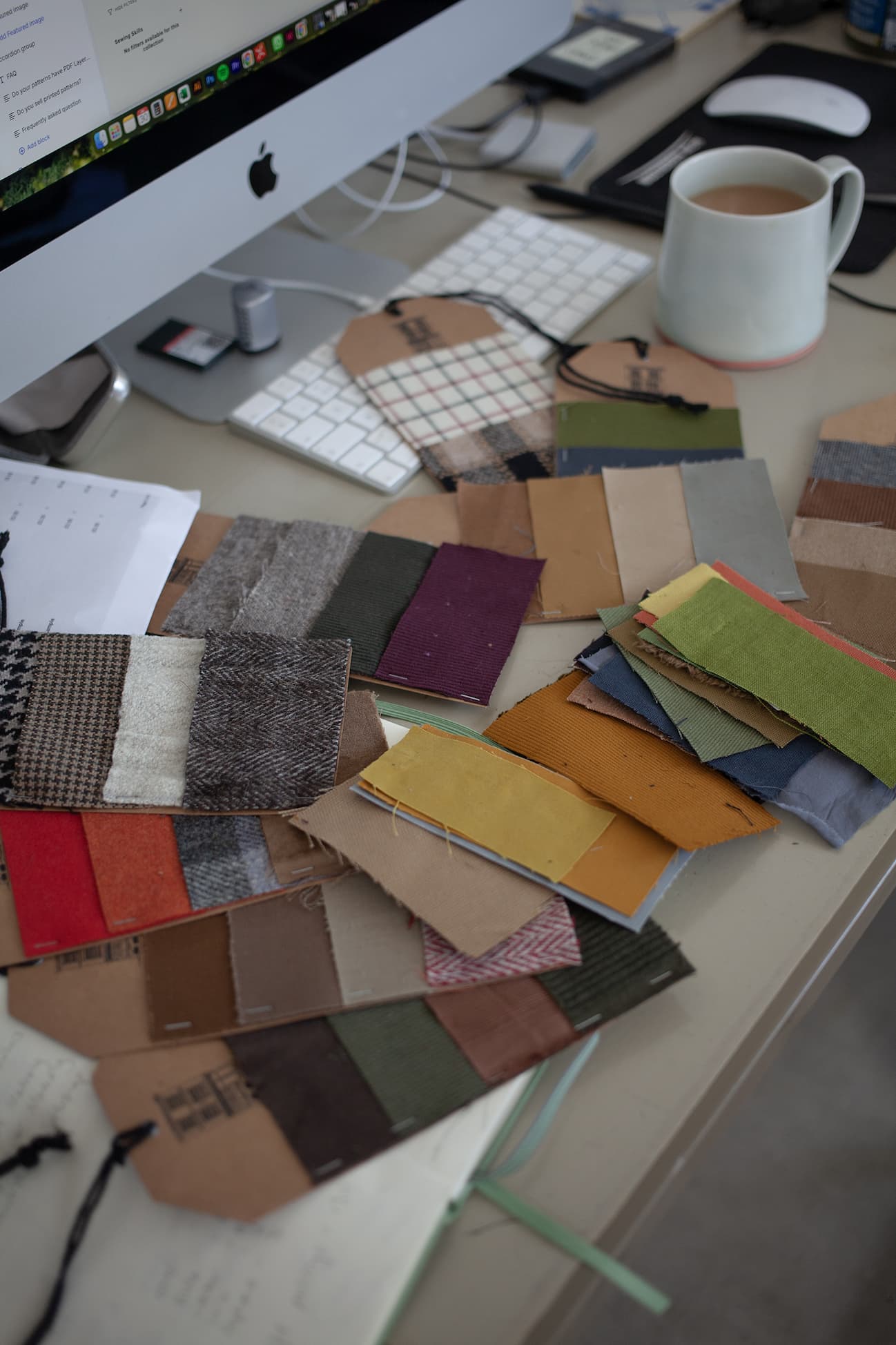
My Fabric Curation Process
I was recently inspired by a beautiful photo a customer took of their Leila shirt in a white poplin - I had never thought of making one in such a crisp white material, but it made so much sense. So I made one for myself! (I will be sharing it on our Instagram soon.)
It made me reflect on how knowing fabrics and visualising what they can be is just as important as having the skills to use patterns confidently.
Fabric curation is my favourite part of garment making. It's where the pattern begins to come to life, from flicking through my library of off-cut swatches to creating the cohesive look of multiple garments.
But I can also see why choosing and sourcing fabrics can be a difficult hurdle to get over in your first large multi-garment project, like the Wardrobe Workshop.
So this is my process to choosing fabric, especially if you are starting to curate a capsule wardrobe...

1. Texture
I usually curate fabrics with the rule that an outfit or capsule should have a mix of 'hard' fabrics and 'textured' fabrics.
If I used a very hand-made textured cotton, like Khadi cotton, as a full outfit, it would look quite flat. Similarly, hard textures like poplin, tight-weave typewriter cotton, or wax cotton for a whole outfit would be quite one dimensional.
Varied textures highlights the beauty in both and help to make each other pop as it's the contrast that brings the texture to life.
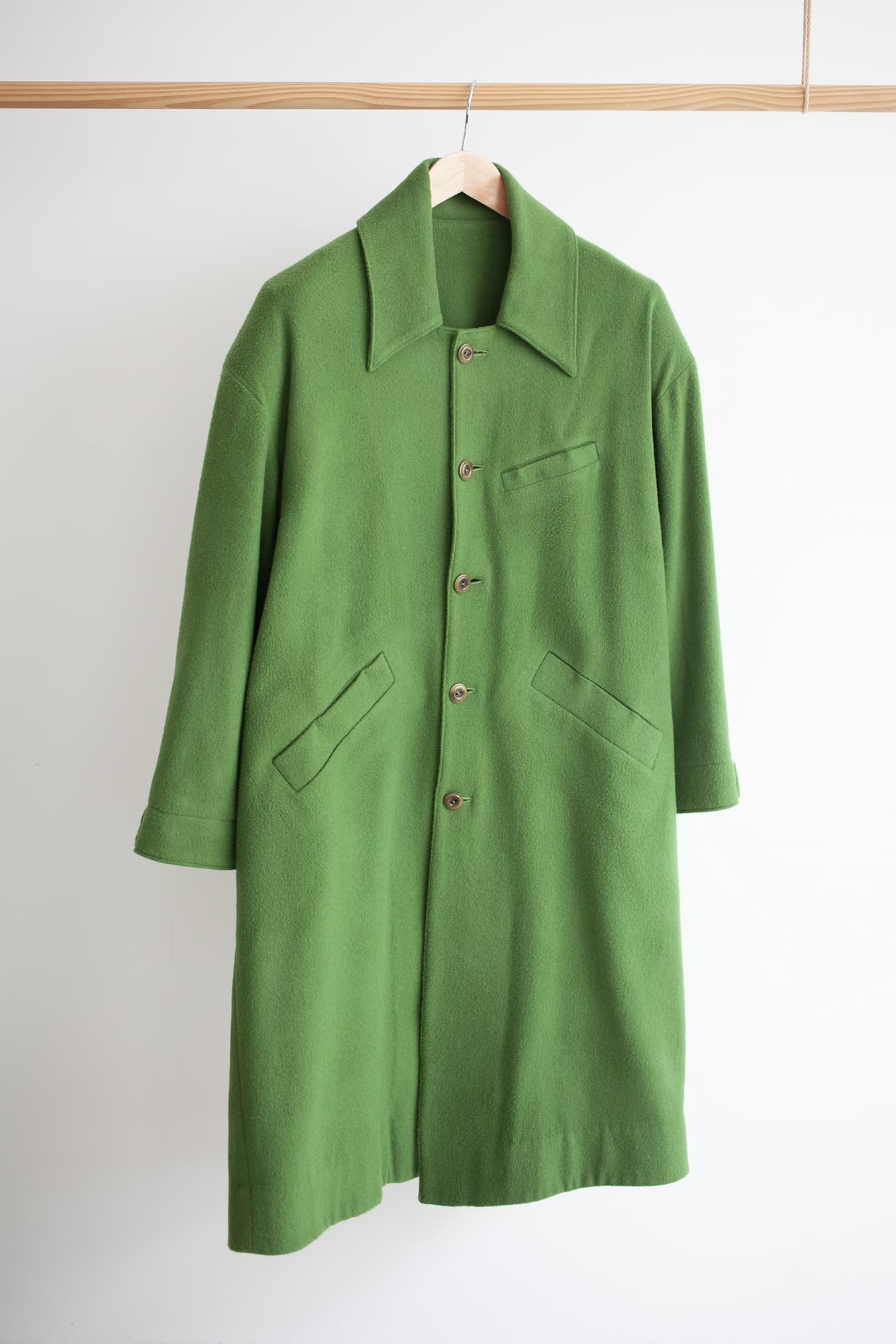
2. Colour
Colour is such an important part of expression through clothes - there should be no limitations! But choosing colours can also feel like choice paralysis, especially if you haven't found your palette.
I think your palette is what you gravitate towards and what you already have in your wardrobe will be representative of that.
If you want to create a staple, I'd recommend using colours you're already comfortable wearing. And if you're looking to make a statement, think about the colours that complement and contrast what you would wear them with. I like to have one statement colour paired with wearable colours like earth tones, but that's personal to me!
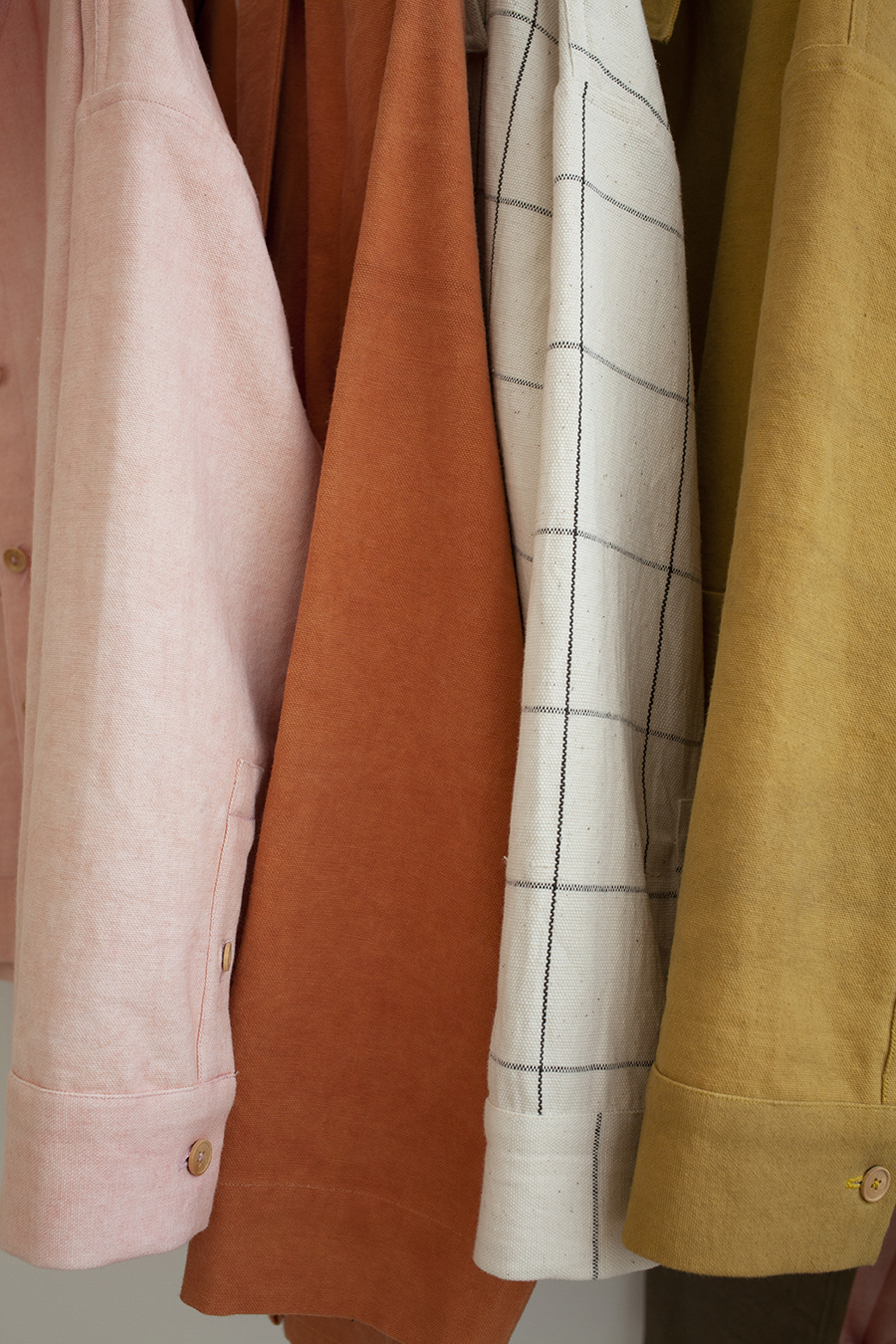
3. Function
It's so important to choose fabrics that not only bring you joy but are wearable and can be worn alongside your pre-existing pieces.
I've often found that when I'm obsessed with a fabric, it's more out of novelty than wanting to wear it. There's some fabrics that are stunning to look at, but aren't suitable as a wardrobe staple. I once made a jumpsuit in an extremely heavy cotton canvas and it unfortunately only had one wear.
Some fabrics are also notoriously more difficult to sew with - like silk or thicker fabrics like denim or wool. But once you are confident with your machine and have control and patience to take your time, no material is impossible.

4. Trimmings
Whatever your curated choice of fabrics are, don't forget to think about buttons, threads and any other embellishments that can bring in colour and personality to your garments. Sometimes a contrasting topstitch can be just as important as the fabric itself!
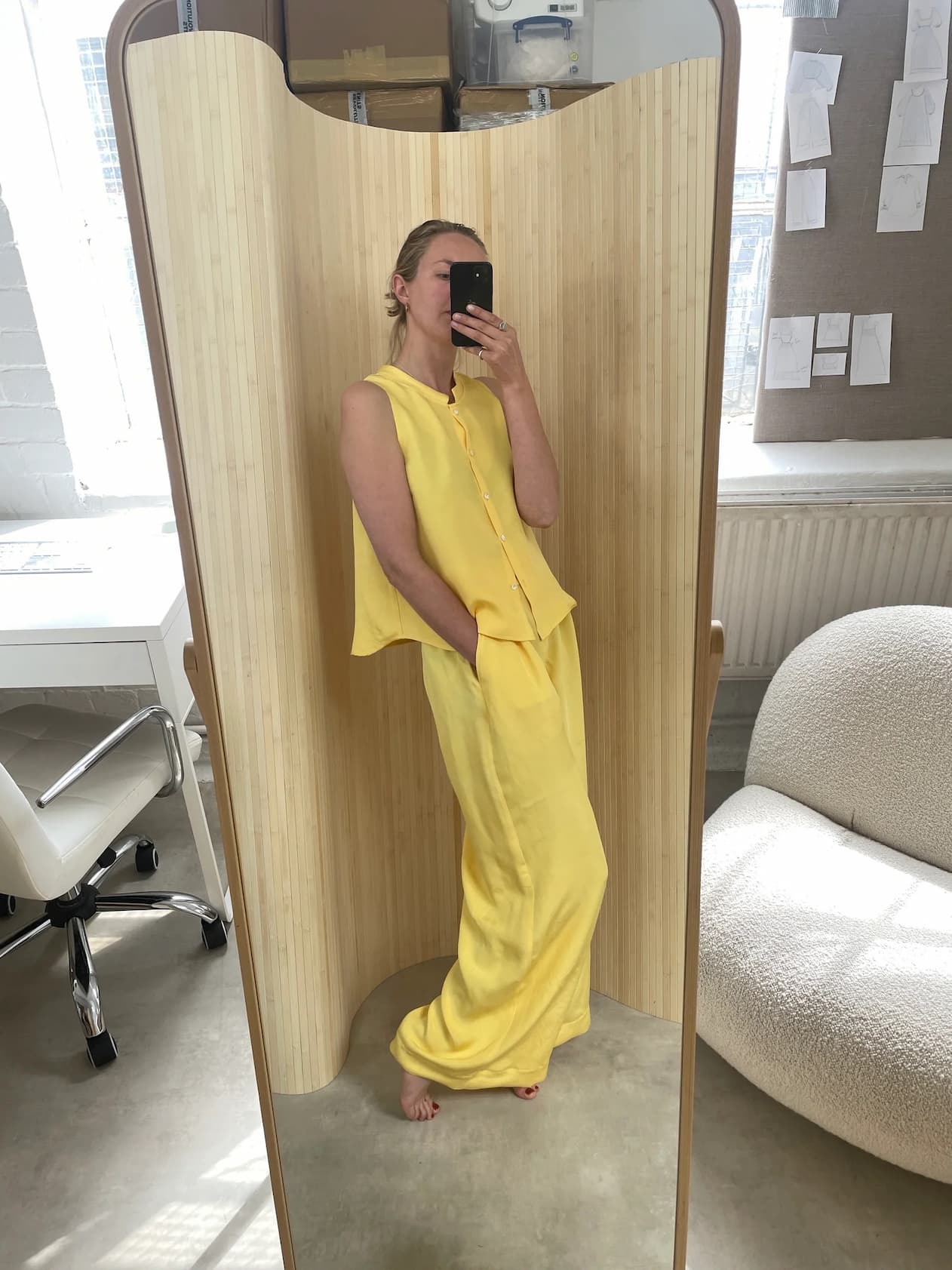
5. Thinking outside the box
Curating and sourcing fabrics is rarely formulaic, because there's no limitations on what you can do with fabric.
If you have a lot of the same fabric that needs using/you want to buy more of the same fabric to reduce costs, you can use the same fabric for a two-piece set. I did this with the Cara Top and Spring Trousers in a yellow silk, and it worked so well as medium between elevated formalwear and casual comfortability.
Also, try to reuse your pattern with different fabrics. The Over Shirt in particular has been made in so many different ways, from wool to denim, or poplin to waxed cotton!
You can also use material that isn't intended for garments - I recently bought an embroidered tablecloth in a charity shop that I am so excited to flip into a garment!
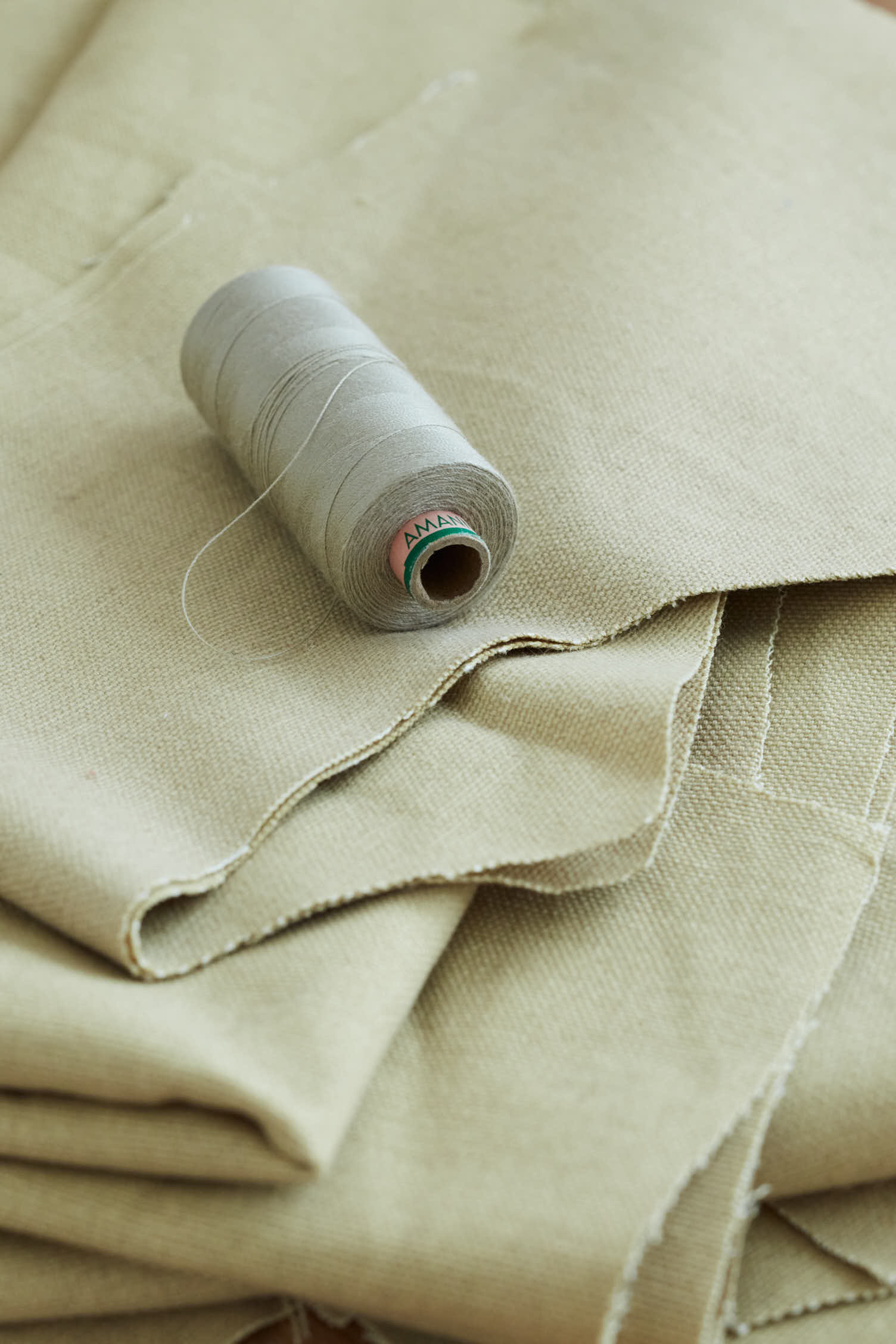
I've recently also had multiple questions about where to source fabrics. As I'm based in London, I have loved visiting the Cloth House and Merchant & Mills. There are also deadstock options like The Fabric House and charity fundraiser Destash4Palestine.
I always love how my own use of fabric is expanded and inspired by seeing your makes. I hope sharing my process helps in your next multi-garment project and beyond.

